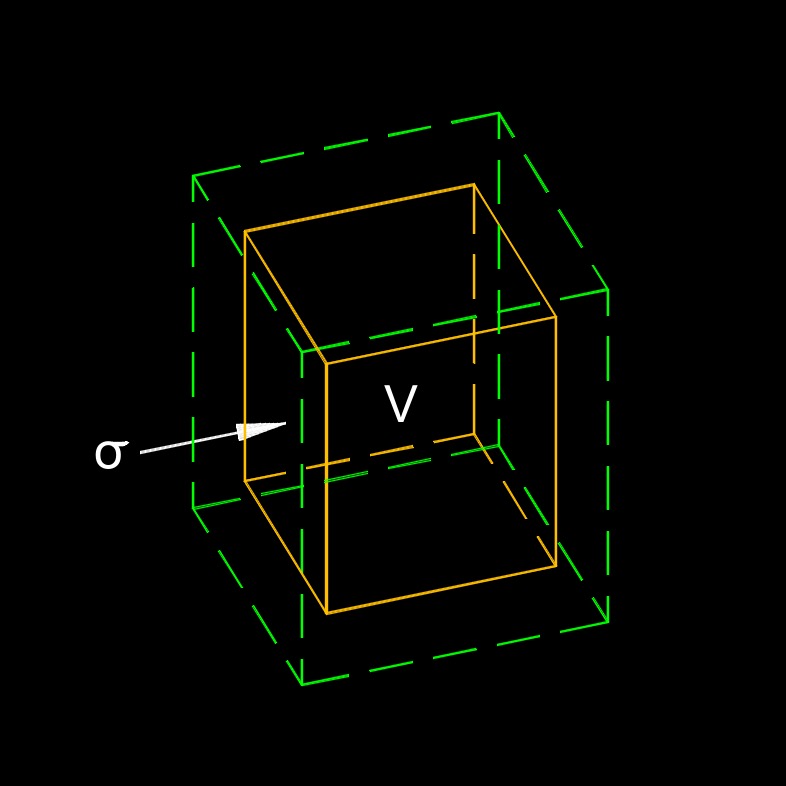Strain Energy formula
|
|
\( U \;=\; \frac{ 1 }{ 2 } \cdot \dfrac{V}{E} \cdot \sigma^2 \) (Strain Energy)
\( V \;=\; \dfrac{ 2 \cdot U \cdot E }{ \sigma^2 }\)
\( E \;=\; \dfrac{ V \cdot \sigma^2 }{ 2 \cdot U }\)
\( \sigma \;=\; \sqrt{ \dfrac{ 2 \cdot U \cdot E }{ V }} \)
|
| Symbol |
English |
Metric |
| \( U \) = Strain Energy |
\(lbf-ft\) |
\(J\) |
| \( V \) = Volume |
\(in^3\) |
\(mm^3\) |
| \( E \) = Young's Modulus |
\(lbf\;/\;in^2\) |
\( Pa \) |
| \( \sigma \) (Greek symbol sigma) = Stress |
\(lbf\;/\;in^2\) |
\( Pa \) |

Strain energy, abbreviated as U, is the energy stored within a material when it is subjected to deformation or strain. It's a form of potential energy that arises due to the change in shape or configuration of a material when it's subjected to external forces. Strain energy is a concept commonly used in the field of mechanics and materials science to analyze the behavior of materials under mechanical loads.
Strain energy is a concept in designing structures and mechanical components. Engineers consider strain energy when designing materials that need to withstand external loads without failing. By understanding how strain energy accumulates and dissipates within materials, engineers can make informed decisions about material selection, design, and safety.
Affect of Strain Energy on Molecules
Strain energy makes molecules less stable.
Strain influences bond strength and reactivity. Stretched or compressed bonds, like those in highly strained systems (cubane or other polyhedral molecules), weaken the molecular framework. The energy stored in these distorted bonds can lower the activation energy for reactions, driving processes like isomerization or cleavage.
Strain energy can dictate conformational preferences. Molecules will often adopt shapes that reduce strain energy, affecting their physical properties like melting points or solubility.
Strain energy is the difference between a molecule’s observed energy (from heat of formation) and the energy of a strain-free reference system.
Key Points about Strain Energy
Deformation - Strain energy is associated with the change in shape or configuration of a material caused by external forces. This deformation can be either elastic, where the material returns to its original shape after the load is removed, or plastic, where the deformation becomes permanent.
Potential Energy - Strain energy is a form of potential energy because it's stored within the material and can be released when the material returns to its original state. Just as you stretch a spring by applying a force and it stores potential energy that can be released when the force is removed, a deformed material stores strain energy that can be released when it returns to its undeformed state.
Calculations - The amount of strain energy stored in a deformed material depends on factors such as the amount of deformation, the material's properties (
stiffness), and the type of deformation (
tension,
compression, shear). It can be calculated using formulas specific to the type of deformation and material behavior.
Elastic and Plastic Deformation - In elastic deformation, the material stores strain energy, and this energy can be fully recovered when the material returns to its original shape. In plastic deformation, part of the stored strain energy may be dissipated as heat due to irreversible changes in the material's structure.



